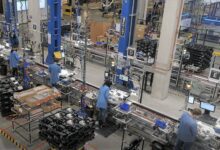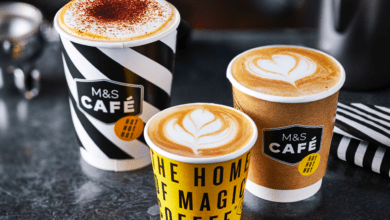Three ways that Covid-19 will change British retail forever

In the midst of a global pandemic the UK high street is suffering more than ever before with many ailing big names, from fashion retailer French Connection warning it will run out of cash within the next few months unless it secures a cash injection, to the ongoing struggles of Marks and Spencer, which scrapped this year’s final dividend, and now considers it unlikely there will be one next year either, citing “highly uncertain trading in a prolonged exit period”.
The world is a different place than it was just a month ago. As companies try to maintain their business and stay afloat, many are now wondering about the long-term impact of coronavirus on the retail and e-commerce industry. Indeed, there are growing signs that the pandemic could impose permanent lasting change on retailers far beyond the end of the lockdown.
Here, Derek O’Carroll, CEO, Brightpearl, recaps three ways coronavirus will change British retail forever.
Fewer stores, more e-commerce
A recent report on coronavirus and consumer behaviour found that 8% of so-called baby boomers are shopping online more. That doesn’t tell the whole picture though. Another study shows that overall, 60% consumers have purchased more goods since the lockdown began and some 39% of respondents also reported that they had been encouraged to purchase products online that they had not considered before, such as pet food, alcohol and shoes.
Online grocery is also now 10 percent of the total, up from 7 percent in the space of just a few weeks. Mintel expects the market to grow by a third this year. Experts also expect a chain of business failures among larger retailers, and an escalation in the decline of the high street after the pandemic.
The changing nature of retail and change in consumer purchasing behaviour is leading to many retailers using the Covid-19 crisis as an opportunity to re-evaluate e-commerce operations and pivot quickly to remain competitive, and this will lead to fewer stores and more e-commerce.
Rapid technology adoption
The Covid-19 crisis is forcing retailers to act much more quickly than they normally would.
As the world moves digital, entering into technology partnerships will become increasingly common. Digital transformation is something we’ve been talking about for a long time in retail, but many brands are swifty moving online – a quick glance at Shopify’s recent sales surge shows some merchants are quickly adapting operations to survive the coronavirus. Other retailers are opening up multiple channels online using Amazon Marketplace and eBay.
Lockdown is pushing consumers online and this creates a huge opportunity for smaller players, especially in niche sectors that traditionally didn’t operate purely online, like gardening and home fitness product suppliers. One such brand, Rep Fitness in the States has seen a triple digital increase in sales since the start of lockdown.
Experts suggest more retailers will now take a deeper look at the entire tech stack and recruit new partners that can help ensure the entire retail operation is fit for purpose post Covid-19. Leading analytics company Forrester even talks of the new era of the Digital Operations Platform, where legacy ERP is phased out for flexible platforms better suited to support modern digital business. In an era of rapid change , agile technology stacks will be vital for merchants to react quickly to the coronavirus challenge.
Click-and-Collect options will accelerate
Click-and-Collect is already popular, but similar to e-grocery has seen a sharp increase because of coronavirus. With more stores and restaurants beginning to reopen and needing social distancing and safety measures in place, expect a major uptick in new zero contact Click-and-Collect systems which allows guests to order their item online before collecting it safely from outside or via car delivery.
Home furnishings retailer Dunelm is one store which will shortly be reopening with the introduction of a new ‘contact-free’ click and collect service. 39 stores have returned across the UK, with more to follow in the coming weeks. At the reopened stores, shoppers will have the option of claiming click-and-collect orders from an external collection point or delivery to car option.
Retailers exploring the Click-and-Collect model need to ensure they have in place the underlying technologies that enable a smooth transaction. This includes integrating Click-and-Collect early in the checkout cycle as part of the range of buying options and the ability to implement accurate/real-time inventory management – it’s vital to have an accurate picture of which stores have what inventory so that shoppers can select the most convenient location and not be disappointed when they arrive at the location to pick up their product.
Even with click and collect adoption increasing over recent years, the necessity of using it now is likely to cause permanent adoption to spike. There are some major upsides to the Click-and-Collect model with regards to cost-saving opportunities for both the retailer and the consumer.
More and more consumers are choosing to pick-up in store to save money and avoid the high shipping costs of next-day delivery. According to Brian Cornell, CEO of US firm Target, when a customer orders online and uses click and collect about 90% of the cost goes away. So, there are some hefty benefits for stores to keep the adoption of these services high.
Derek O’Carroll, CEO at Brightpearl, a retail operations platform for retailers and wholesalers







